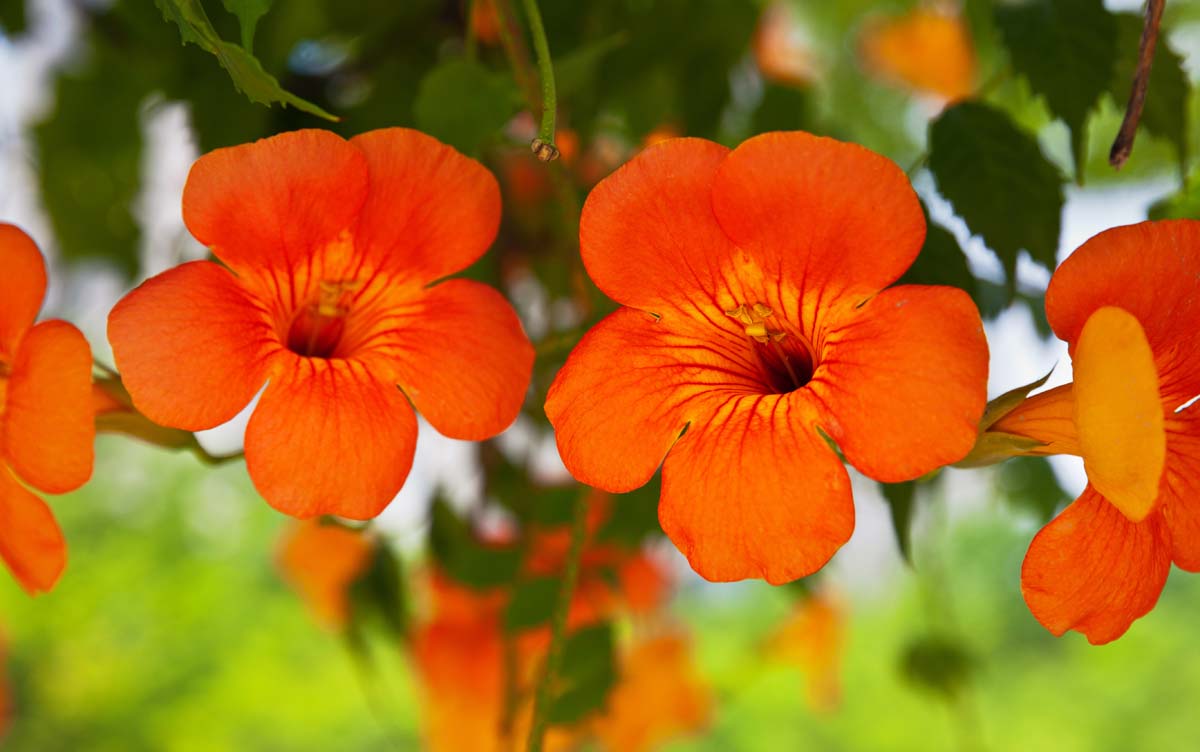Description
Campsis – Trumpet Creeper – Trumpet Vine –
There are 2 species of vigorous, woody stemmed, deciduous climbers, usually clinging by aerial roots, in this genus. They occur in woodland in China and Eastern North America. They have opposite, pinnate leaves, with ovate leaflets. From summer to autumn, they bear showy, large trumpet shaped or funnel shaped, dull scarlet to orange flowers, to 3″ long, that are attractive to hummingbirds, held in terminal panicles or cymes. Train against a wall or fence, or up a pillar, or on a tree.
Grow in any moderately fertile, moist but well drained soil, they tolerate poor and restriction to the roots. Where marginally hardy, trumpet creepers are best grown against a warm wall in full sun. Elsewhere, they will tolerate a wide range of exposures. Provide a sturdy, large support, many Campsis species can pull down an inadequate support or overwhelm a small tree. Prune in late winter or early spring.
Prone to fungal leaf spots, powdery mildew, scale insects, mealybugs, and whiteflies.
C. grandiflora – Bignonia grandiflora – C. chinensis – Tecoma grandiflora – Chinese Trumpet Creeper – Chinese Trumpet Vine – This fast growing climber from China can reach 30′ feet high. It produces pinnate, mid to dark green leaves, to 12″ long, composed of 7-9 ovate, coarsely toothed leaflets. From late summer to autumn it bears pendent, terminal panicles of 6-12 open, 4″ long, funnel shaped, dark orange to scarlet flowers, with spreading lobed. It produces relatively few aerial roots and may need to be tied permanently to its support.
Zones 7-10




